If you’re an engineer or just curious about IoT, want to create a smart home project, or want to design a smart system, then you’ll love these IoT development boards.
An Internet of Things development board (or just an IoT development board) can be used for simple or complex projects and is perfect for learning purposes. They’re also a lot of fun to use, relatively inexpensive, and extremely customizable so you can use them for many different applications in no time!
In this article, we’ve included a few things to know or consider before buying an IoT development board. If you want to skip all this and get straight to the products, just scroll down below!
Table of Contents
1. What is IoT: Internet of Things
2. What is an IoT development board?
3. The different types of development boards for IoT available in 2021/2022
4. 10 of the top development boards on the market today
What is IoT: Internet of Things
IoT (Internet of Things) is the inter-networking of physical devices (also referred to as “connected devices” and “smart devices”), vehicles, buildings, connected industrial equipment, and other items – embedded with electronics, software, sensors, actuators, and network connectivity that enable these objects to collect and exchange data.
In recent years IoT has become a major trend in technology, making our world smarter than ever before. A recent study has shown that by 2025 there will be over 30.9 billion units of IoT devices [1].
The internet of things technology is used in a variety of ways to make our lives easier. Some common examples include:
- Home automation – using IoT technology, you can control features in your home such as the lights, temperature, and security system from a smartphone or computer.
- Smart cities – by collecting and analyzing data from sensors placed around the city, officials can make better decisions about traffic, electricity grids, pollution, and other urban issues.
- Health care – connected medical devices can help doctors monitor patients’ health more closely, and even allow patients to monitor their own health data.
In fact, I have a few smart devices myself, including a smart home meter, a Nest thermostat, a Ring doorbell, and even a Siemens Smart Oven (although I haven’t taken the ‘leap of faith’ switching it on while I am away from home!)
What is an IoT development board?
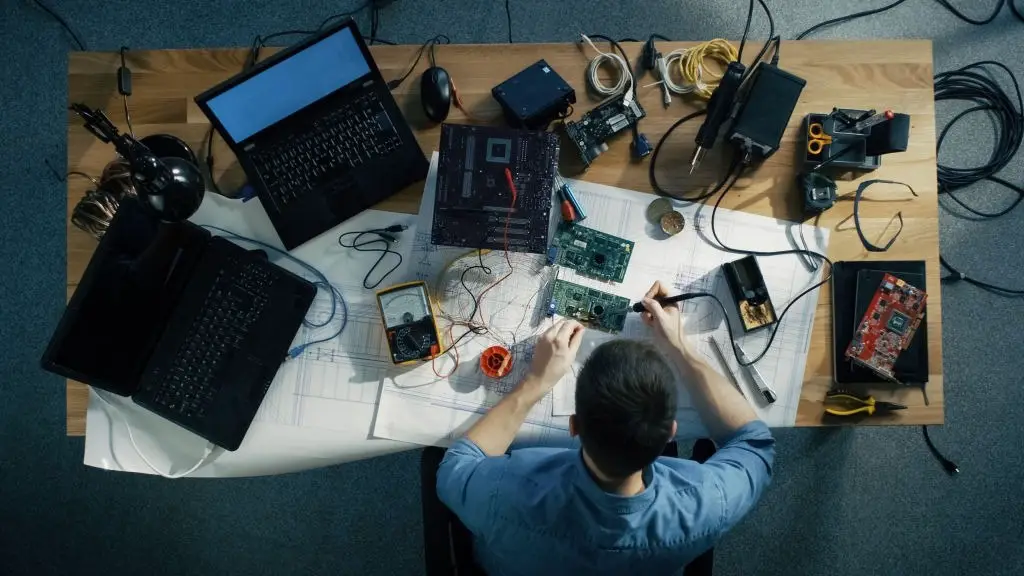
So what exactly is an IoT development board? And how can you use it for your own projects or build something completely new with it? Well, let’s take a look!
An IoT development board is a small single-board computer, made specifically for prototyping and experimenting with. They allow makers, engineers, or us geeks to test, innovate and tinker with or even bring new ideas to market.
Some of these boards can be the size of a credit card, have a range of connectivity options (e.g. WiFi, Bluetooth, GPS, or LAN ports), and are compatible with an OS (e.g. Linux or Windows 10 IoT Core). Many boards can be programmed using Arduino IDE, but some of the boards use other programming languages (e.g JAVA or Python) and IDEs. With these boards, you can create different kinds of IoT solutions, products, devices, or applications combined with all kinds of sensors or actuators.
The different types of development boards available in 2021/2022:
There are three types of these boards:
- Microcontroller-based boards
- Single-Board Computers
- Cellular-enabled IoT boards
We have already covered microcontrollers, check this article: 10 Best Microcontroller Boards for Engineers and Geeks. Choosing the right type of board depends on several factors. First of all, of course, it depends on the nature of your project. Some other factors include:
- Architecture
- Memory
- Availability
- Power
- Compatibility
- Cost
- Development support
These boards have some common advantages like they can be used for prototyping and thus the learning process becomes faster for students. It also disregards using long wires, debugging, and printed circuit boards.
10 of the top development boards on the market today
There are thousands of these boards available in the market, but it is difficult for beginners to choose one based on their needs because each one has its own advantages and disadvantages.
So the team at Engineering Passion has researched and taken the above factors into consideration to create the list of the “Top 10 IoT Development Boards” you can use for your IoT projects. Let’s check the list!
#1 Raspberry Pi 4 Model B
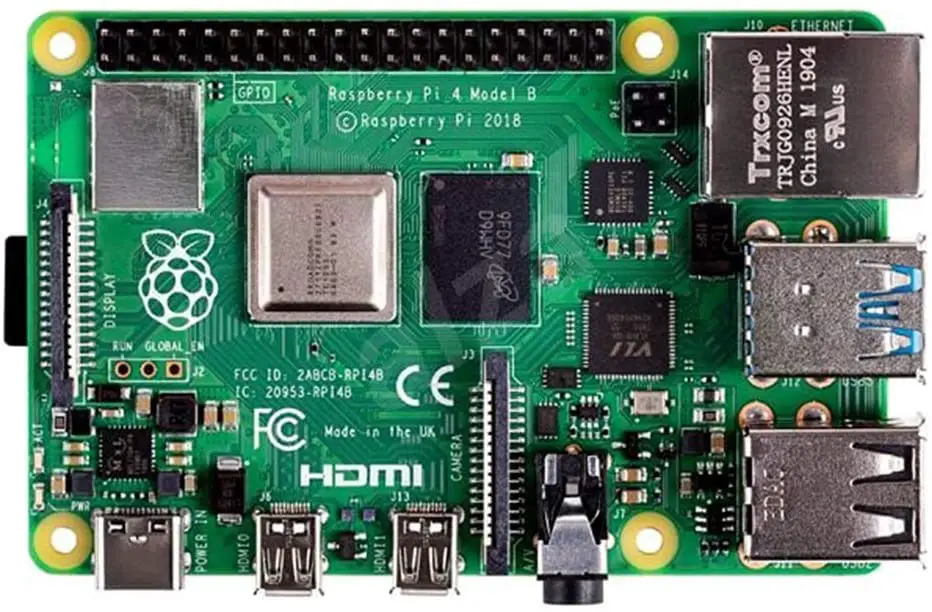
Raspberry Pi is the most advanced and powerful board available in the market. It is mostly used by engineers and technologists for making small and big-scale IoT projects. Raspberry Pi falls in the category of a single-board computer. Thus, they are also known as mini computers. There are several different versions of the Raspberry Pi development board. The latest edition launched is Raspberry Pi 4 which is a faster and updated version of its previous version Raspberry Pi 3.
Some feature of Raspberry Pi 4 Model B includes Quad-core Cortex-A72 processor 64-bit SoC at 1.5 gigahertz. It comes with variant RAM (LPDDR4) versions including 1GB, 2GB, and 4GB. More features include 5.0 gigahertz wireless connectivity, Bluetooth version 5.0, four USB ports including two 2.0 and two 3.0 USB ports. It also supports SD cards.
To make it simple for developers to build projects, Raspberry is a powerful minicomputer that allows you to install various packages like Java Python or Node.js with up to 40 GPIO Pins. With all these features, Raspberry is one of the best IoT development boards which gives you powerful performance for any IoT project at a decent cost.
#2 Arduino Uno
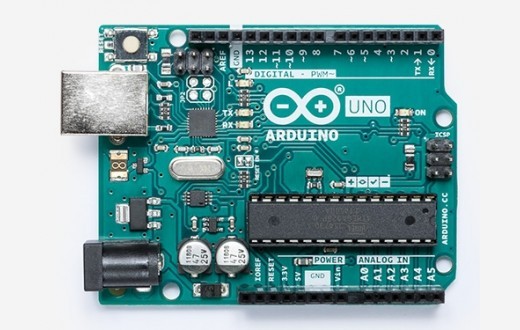
If you are a newbie in the IoT industry and want to learn projects simply and easily, Arduino Uno is the best available board for you. It is one of the popular and favorite boards among engineers and geeks in various fields. It is also said that Arduino Uno was among the first boards developed for IoT and artificial intelligence projects. It falls in the category of microcontroller-based boards.
Although Arduino Uno is a simple board; it provides you with a powerful and efficient performance at a relatively low cost. That’s why it’s famous and almost everyone’s favorite choice. It has a massive community that provides you with lots of online resources, tutorials, and examples to help you learn how to get started quickly.
Arduino Uno has almost everything you need for developing your IoT projects including 14 Digital input/output pins (6 PWM outputs), 6 Analog inputs, 2 USB connections, 1 power jack that provides 5V DC which can be used to power Arduino directly. Its community has grown to a large number, and many new projects are developed by young minds every day using Arduino.
Some of the Arduino Uno board’s features include 6 analog pins and 14 I/O pins. It comes with 32KB flash memory which can compute complex operations and store complex logic and codes. Arduino Uno is based on the Atmega328P microcontroller having a USB port, header, reset button, and power jack. And it weighs only 25 grams, it also comes with a 16MHz Clock speed.
Available on Amazon!
#3 Arduino MKR Series IoT Boards
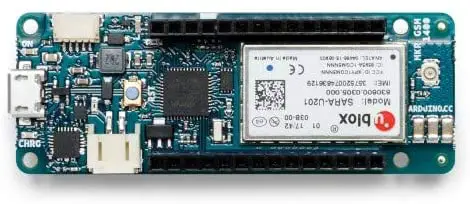
Arduino, the most used and most popular board for electronics development has killed it with its MKR family board. Arduino has launched 5 new development kits with in-built connectivity to ease the development of connected hardware products. These include Arduino MKR 1400 with cellular, Arduino MKR Fox 1200 with SigFox, Arduino MKR WAN 1300 with LoRA, Arduino MKR WIFI 1010 with Wifi, and Arduino MKR NB 1500 with NB-IoT.
MKR GSM 1400 combines the functionality of Arduino Zero and global GSM connectivity. The GSM module attached to the board supports GSM’s range 880/915 MHz. MKR FOX 1200 combines the functionality of Arduino Zero and SigFox connectivity. It is the ideal choice for geeks and engineers wanting to design IoT projects with minimal previous experience in networking having a low-power device.
View option available on Amazon!
#4 NVIDIA Jetson Nano
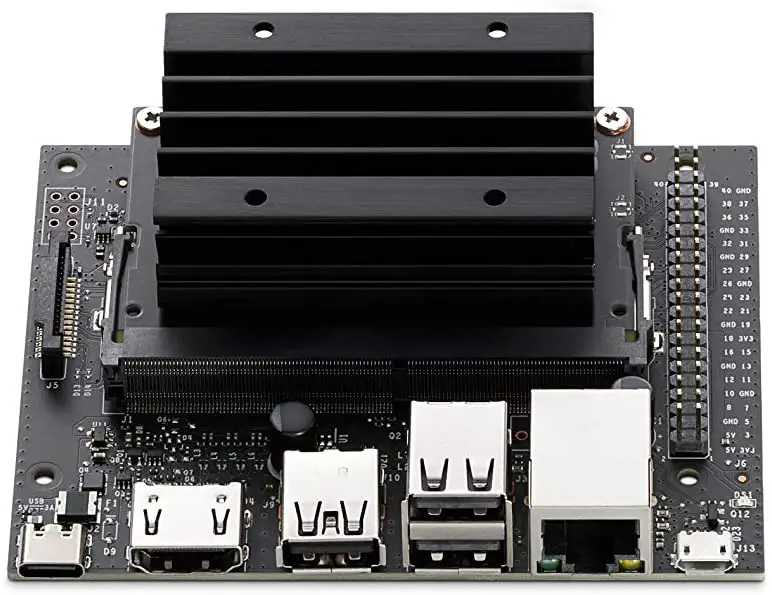
Jetson Nano is another single-board-based development kit for both artificial intelligence (AI) and IoT-based projects and prototyping. The board is used for projects where high graphical performance is required, as it has a built-in NVIDIA graphical processing unit (GPU) installed. The board also has a computing platform installed, which gives it the ability to make artificial intelligence models rapidly. Thus, Jetson Nano provides you with good performance (very similar to Raspberry Pi models) for projects like artificial intelligence, image processing, the internet of things trend, and machine learning.
You can choose this board specifically if you are working on a project based on artificial intelligence. Features and technical specifications of Jetson Nano board include 128 core maxwell GPU, Quadcore A57 processor at 1.43 GHz, 4GB LPDDR4 memory, microSD card support, HDMI port, display port, 5 USB support including four 3.0 and one 2.0 ports.
#5 Intel Edison
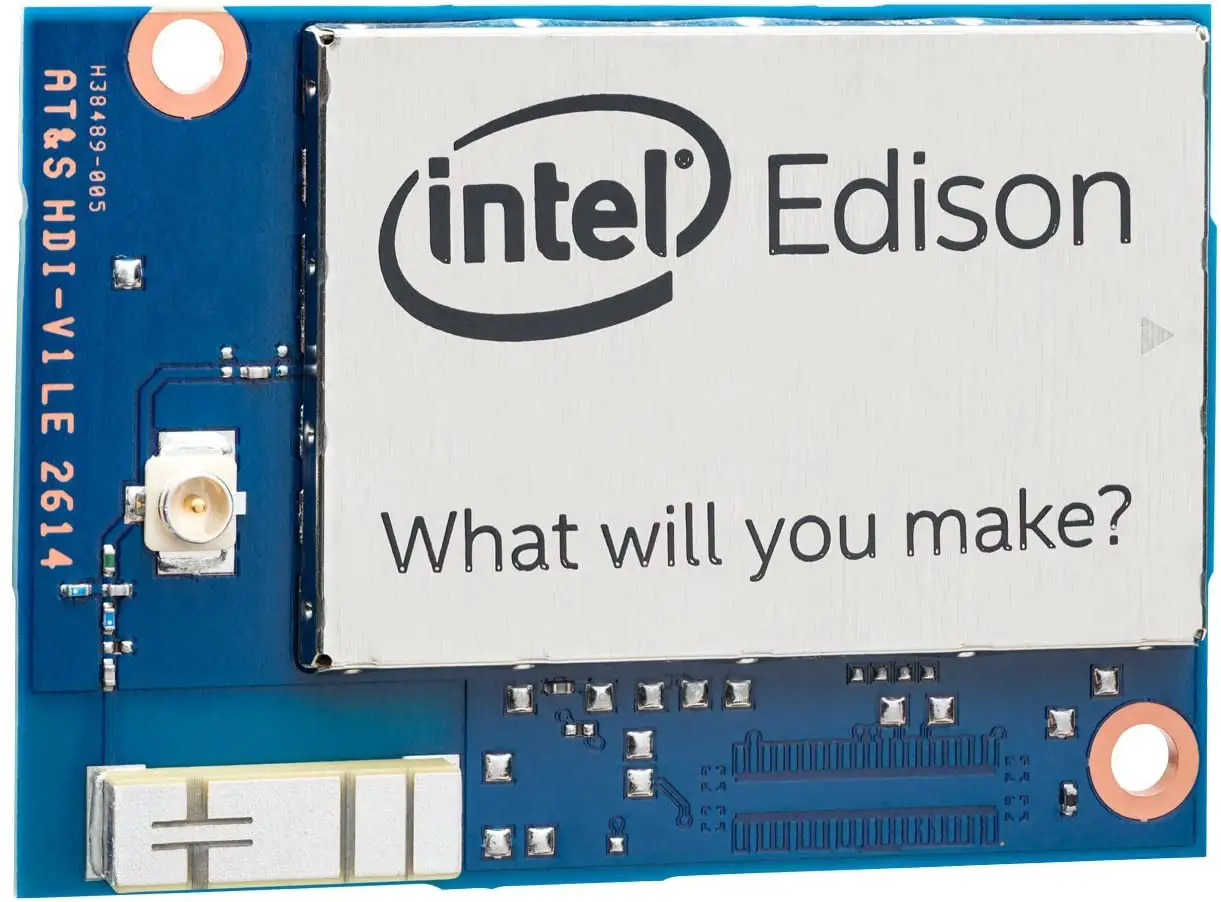
Intel Edison is yet another powerful single board-based category development board for IoT prototyping. The Intel board is built for making advanced IoT projects. Intel is well-known for making high-performance and efficient processors for computers. Thus, this board would not disappoint you if you are planning to go with it and build powerful and advanced IoT projects for the engineering industry.
Intel Edison is available in two versions including Arduino compatible board and a smaller board for making simple projects. It comes with dual-core, Wi-Fi support, Bluetooth 4.0 connectivity, and 4GB flash memory. The board supports around 16 digital I/O pins, 4 PWM output pins, 6 analog pins, 1 I2C port, and 1 Rx/Tx port. It is a bit expensive as compared with other IoT development boards, however, its features and high performance make the price tag reasonable.
#6 Adafruit FONA
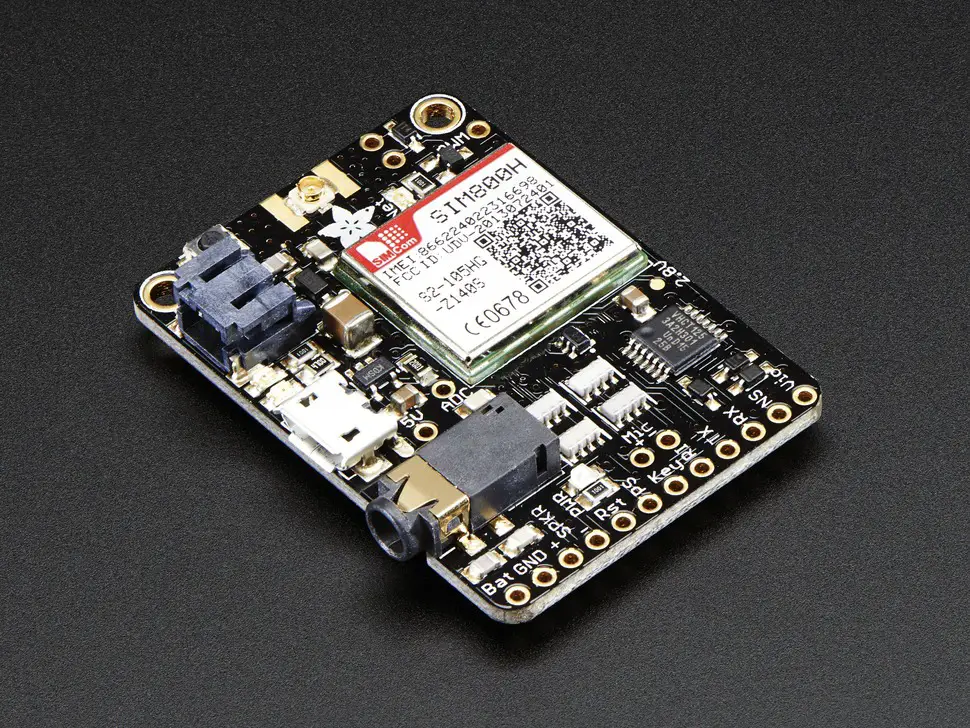
Adafruit Fona is one of the best cellular-enabled IoT development boards. The fundamental advantage of using a cellular-enabled IoT board is that you can add your message to the project in the form of text or voice. The board enables you to connect it with any network operator. The most important advantage of Adafruit Fona is that you can make calls or receive them remotely using only a telephone receiver.
You can also receive FM signals for radio broadcasting. This board is ideal for geo-restriction projects for example you can program it to receive notifications and alerts when it moves out of a specific place or region. It has Quad-band 850/900/1800/1900MHz, PWM and Buzzer vibrational motor control, AT command with auto band detection, 4-pole TRRS headphone jack, ports for external 8Ω speaker, an electret mic, level shift circuit, and many more.
#7 Particle Electron
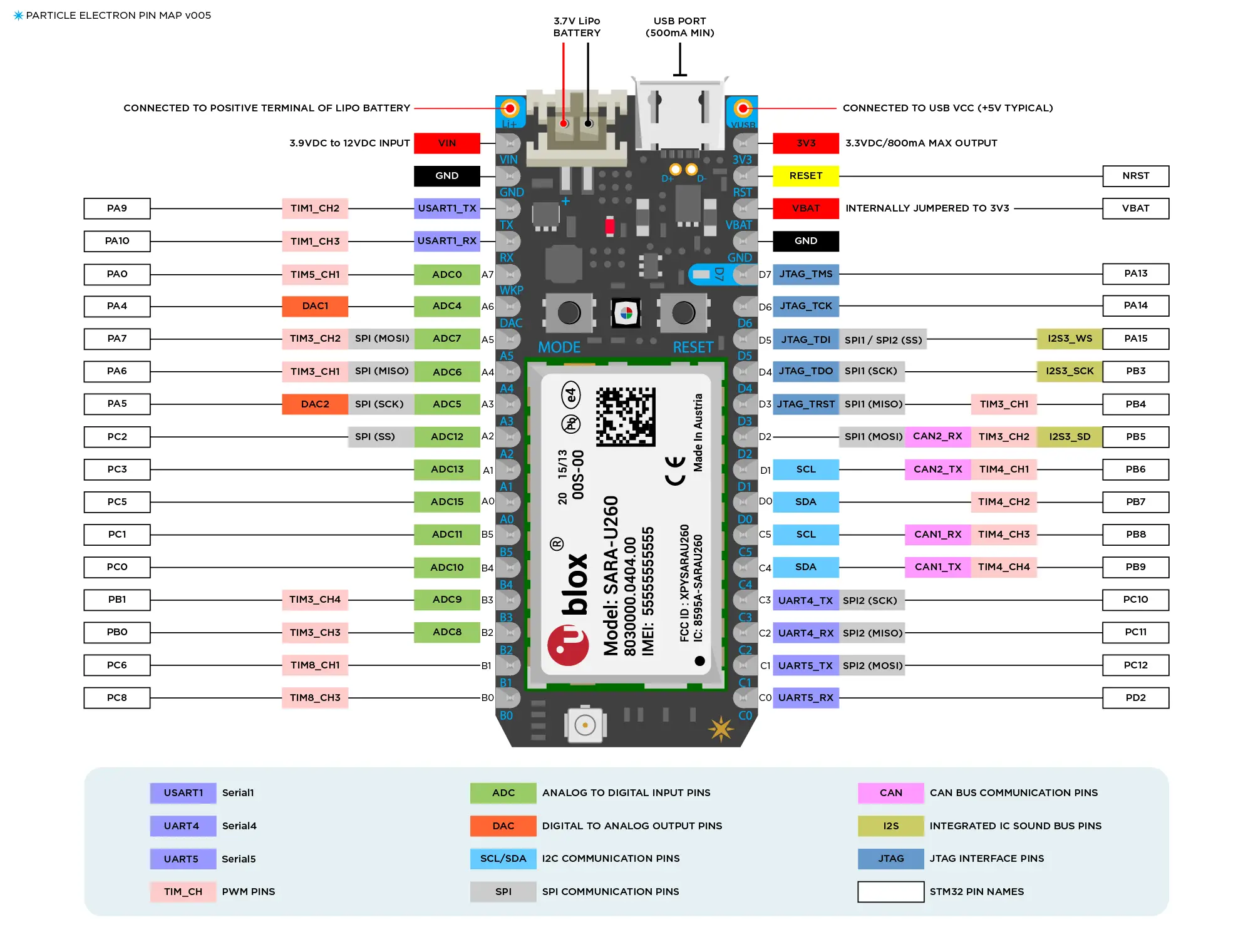
Particle Electron is also a cellular-enabled development board for prototyping and IoT projects. It comes with fully cellular standards, supporting both 2G and 3G SIM cards and software for building cellular projects. You also get a cellular module along with Particle Plectron such that it allows you to connect devices with an internet connection easily.
You do not need to do any kind of configuration; Particle Electron comes with pre-installed modules and software. You can make GPS tracking projects using this board conveniently, for example, to track objects and devices. Technical specifications include ARM M3 microcontroller, 128 KB RAM, one MB flash, antenna, USB support, 30 GP I/O pins, Battery, LEDs, and a Particle SIM card.
#8 Google Dev Board
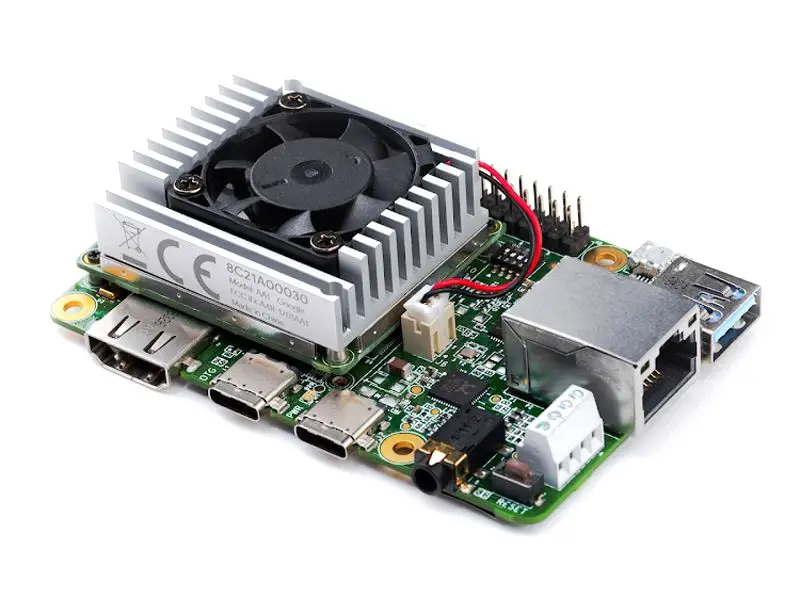
Google Development board is also an amazing kit for prototyping and making artificial intelligence projects. It has specific support for TensorFlow to make advanced IoT prototyping. Its framework is developed and supported by Google. You can use this board to make web-based projects and projects like a personal assistant like Siri.
The Google Dev Board is so powerful that the onboard Edge TPU coprocessor is capable of performing 4 trillion operations (tera-operations) per second (TOPS), using 0.5 watts for each TOPS (2 TOPS per watt). It is a single-board computer with system-on-module and wireless connectivity support. The board has a quad Cortex-A53 Cortex-M4F processor, GC7000 Lite Graphics, 1 GB LPDDR4, 8 GB flash memory, four different types of USB support, 3.5mm audio jack, and Wi-Fi and Bluetooth 4.2 support.
#9 Pycom Fipy
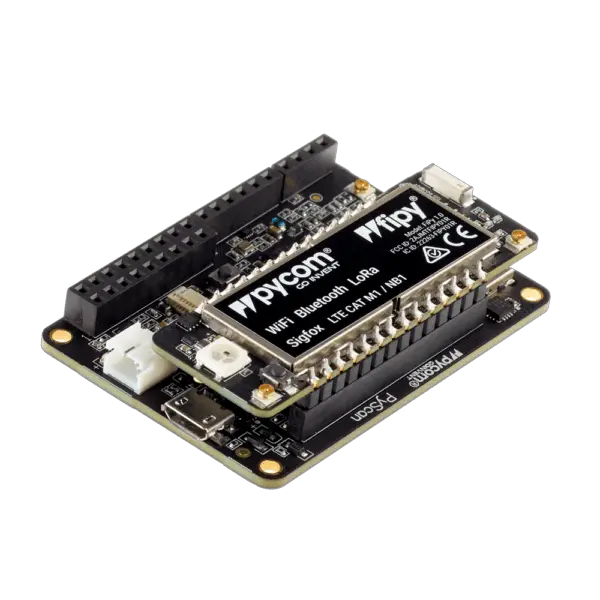
Pycom Fipy is also one of the best single-board-based minicomputers. It allows you to have 5 different types of connectivity options. These include IoT cellular, Wi-Fi, Bluetooth, Sigfox, and Lora. Thus, you can leverage these multiple options on one single board. Pycom Fipy is more of a modern development board you can use with modern tools and software than the Arduino Uno board family. It connects you to a global LP wide area network (WAN).
It also gives you accurate measurements and calibrations using advanced equipment and software. It has a range of up to 50 km. More important specifications include two 64-bit timers with PWM, 22 general-purpose I/O pins, low energy Bluetooth, 16 Mbps Wi-Fi connectivity, 4 MB RAM, 8 MB flash memory, an extra ULP-coprocessor that can maintain GP I/O Pins, and many more.
#10 Giant Board
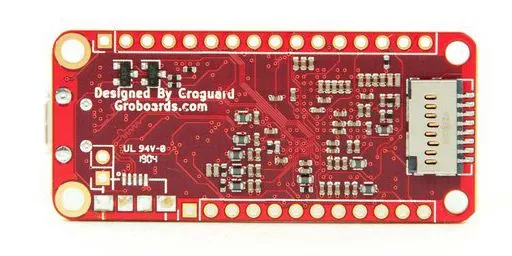
The Giant Board is a tiny single-board computer (SBC) built on the Adafruit Feather form factor. It offers a tiny, powerful platform that works with a variety of existing accessories. It comes with Debian Linux preinstalled with a 500MHz Microchip SAMA5D2 ARM Cortex-A5 Processor. It has a MicroSDHC slot for up to 128 MB DDR2 RAM and LiPo battery compatibility.
In a project with restricted space, the Giant Board makes an excellent substitute for a Raspberry Pi or BeagleBone because it delivers more power than a typical microcontroller chip. It’s designed to assist manufacturers in using Adafruit’s Blinka libraries for CircuitPython. The Giant Board is a high-quality SBC with comprehensive documentation. It’s also reasonably priced, starting at around $70.
Available on Amazon!
Note: As an Amazon Associate we earn a small amount of commission from each sale on Amazon.
Bottom-line:
IoT technology has had a very promising uptrend in recent years. Part of the upward trend stems from the fall of device prices. It enables every electronic device to connect with the internet such that you can control and manage all devices remotely. Engineers and geeks use the development boards to build their IoT projects.
The boards mentioned above can be used to make prototypes and real-time IoT projects. These boards are very easy to use and lots of tutorials for building IoT projects are available on YouTube. Programming experience is a plus if you want to work with microcontrollers or microprocessor boards, however, it’s not mandatory as you can find the source codes from online ready-to-use libraries.
References:
[1] https://www.statista.com/statistics/1101442/iot-number-of-connected-devices-worldwide/




![Types of Engineers and What they Do [Explained]](https://www.engineeringpassion.com/wp-content/uploads/2022/04/types-of-engineers-and-what-they-do-280x210.jpg)


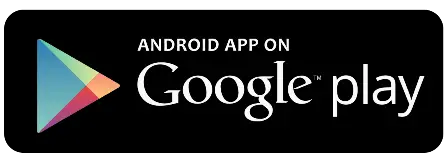


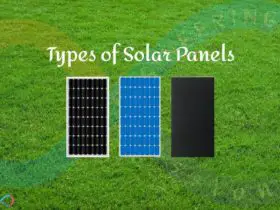
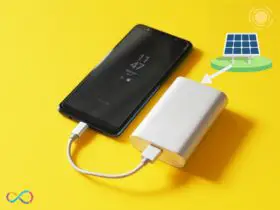

Leave a Reply